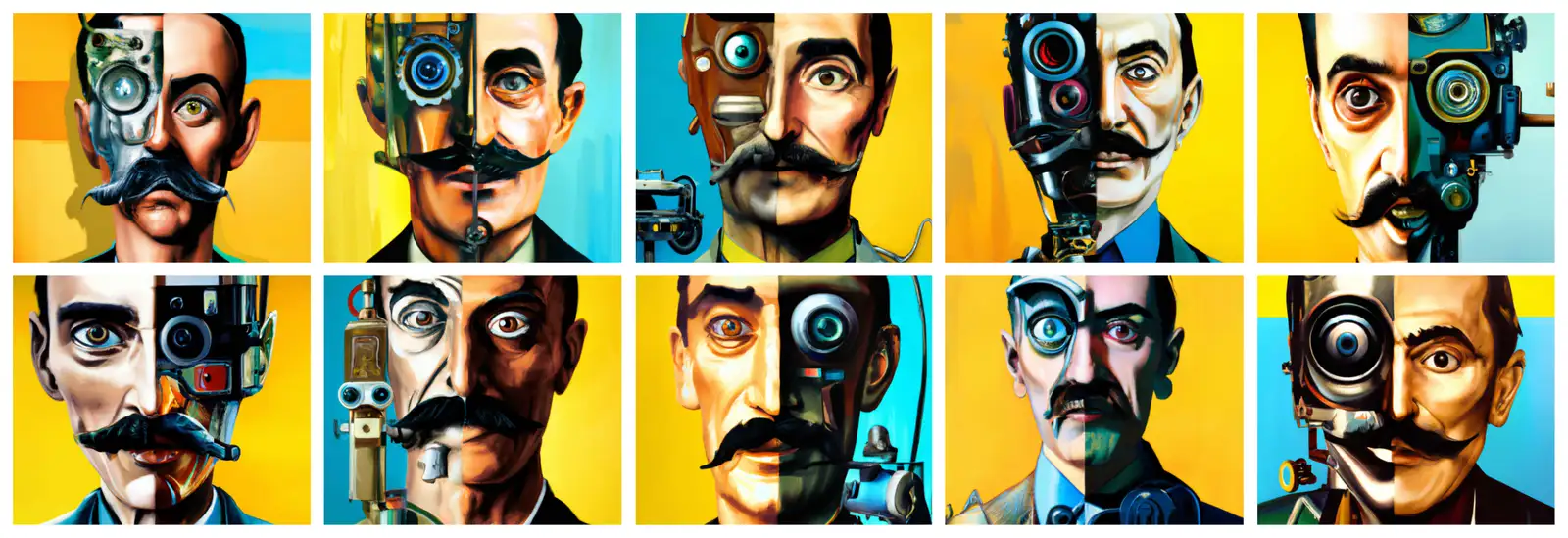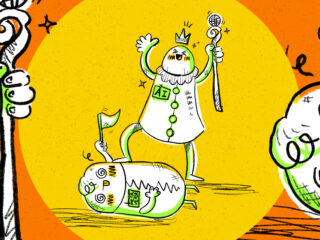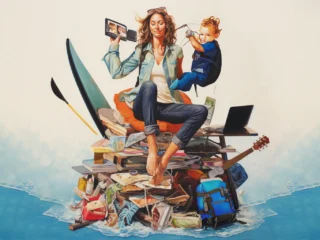The short answer is: No.
New tools have come and gone and the way we think of design has, while zigging and zagging, remained consistent over millennia. From the first tools and temples to the cities designed by the Greeks and the Romans and the Mayans, we have endeavoured to keep a healthy balance between form and function to solve the problems that surround us.
The printing press did not change the way we think about reading but it did give reading to the masses. A single new ‘design’ gave way to widespread literacy, changing the world and arguably leading directly to the internet.
But the longer answer relates to how we engage with design. It deals with the way the new tools are heading our way and how these could result in a significant shift in the way we perceive our roles in the design process.

Design thinking is expanding in scope
Design is a term with an immense scope. From drug design to graphic design, from residential interiors to Mars rovers, and from movie sets to fashion design, designers the world over apply their knowledge and the principles of good design to coming up with the stuff that shapes our world. All of these areas of practice are already making use of AI assistance. We have been successful in training machines to take on the problems that are too big for us to solve and to leverage huge computational power into solving the issue for us.
This is not new thinking. When we ran out of the limitations of our arms and legs, we designed and built the machines that carved out the industrial revolution. We could build taller structures, make more stuff and do so quickly, travel faster and farther, and in general unshackle ourselves from the physical limitations of our species.
Now, with AI taking a shape that more of us can use and understand, we are taking the next logical step and reaching beyond the limitations of our minds.

AI has been around for a while
AI is not new and it has been in use for a relatively long time in tech terms. If you use banking, social media, air travel, even the power grids in more advanced countries, you have been making use of neural networks with machine learning ability. The most efficient and hard-working systems that silently make our lives easier and more convenient are running some form of artificial intelligence but we are not able to look under the hood and notice.
What’s changed is that we can now ‘talk to’ an AI and get it to do our bidding. You’ve probably heard of DALL-E – the first image generator that we could speak to using plain English and that would generate images in a matter of seconds. A few months later it was the time for ChatGPT to make waves.

AI tools are more accessible than ever
But there are many, many more examples of AI-powered tools that are available to us, most of which have the ability to perform a single function very well. The easiest to get to grips with are the tools that exist as a subset of tools we use every day.
Take all the new neural filters that are inside Photoshop, or the integration of ChatGPT within Notion and Bing, the way photography stock libraries are giving access to generative image AI services, and other examples of the ready availability of AI that’s already making our lives easier.
There are also the useful tools that are making our workflow quicker and easier, the apps that take the repetitive or the boring and just make it happen while we’re doing other things. Designs.ai, Adobe Sensei, UIzard, Sketch2code, and all the apps out there that put a machine learning system at your disposal to automate the drudgery are there to give our minds better things to do. One could argue that these tools should and will become more pervasive as we apply our minds to really creative work.

Shifting behaviours
From a design perspective, there are more creative tools out there that are changing the way we work and, sometimes, the process with which we reach creative choices. Take using Midjourney or ChatGPT as a sparring partner, as a tool with which you can share ideas and dump the contents of an absurd idea onto to see what comes out. This is a behavioural shift. We previously ‘edited’ these ideas and then shared them with our peers. We pitched writing prompts, shared early sketch work, showed prototype models, sent over advanced drafts of a research paper… usually when it got to a point where we were seeking affirmation of our thinking more than anything.
Of course, doing so with an open mind, and selecting the people who we consider like-minded, made the process an integral part of the creative journey. Most design adds onto the work of our peers or of those who came before us.

Machines don’t judge, don’t get tired…
In the case of using AI as a member of the creative team, there is no need for affirmation, there is no fear of exhaustion or rejection or judgement – one can simply dump their intentions on whatever tool is available and see what comes out at the other end. Many times, it’s rubbish. Sometimes it’s predictable. But there are those times when the AI misfires in a way that is genuinely inspiring and this is where the magic can happen. At its least useful, it shortens the delay between thought and execution. And when we see it at its best it is a beautiful synergy between human and machine that creates what we’re already calling art.
This has been seen across the world of design. The impossible architecture, fashion, urban contexts, graphic art, and photography that is being created by the sudden rise of the AI artist is already an inspiration. It sows fear in those afraid of change but, to those with a grasp of the way the world works, it is a source of inspiration and imagination.

Work with the tools, not against them
The best work out there is being created by those who have taken to the tools like a fish takes to the sea and they have learned how to wrangle these unpredictable, often infuriating tools into submission, coaxing beauty out of the right combination of seed images and text prompts.
Once again, this is not new. Given the same paintbrush used to paint the Mona Lisa, I will still create a terrible stick figure. The best design has never been about the tools. It has always been about the brains that put the tool to task.
This time around, it’s a more complex and almost literally a more cerebral set of tools we’re dealing with so the knee-jerk reactions will be stronger. But it doesn’t change the way we think about design. It changes the way we integrate with the tools. And the sooner we realise that it’s up to us to make our silicon-based progeny help us create our best work, the sooner we will get to sharing it with the world.




